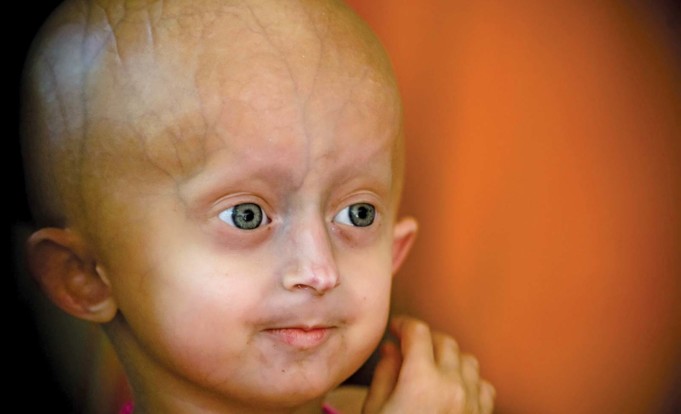Progeria syndrome is a progressive genetic disorder that causes rapid aging in children. This genetic condition can lead to children aging prematurely, and those affected can live to an average of 13 to 14 years old.
Progeria syndrome is a very rare condition, and according to PRF (Progeria Research Foundation), the condition affects 1 in every 20 million individuals. Approximately 380 to 400 children are living with the condition at any given time around the world.
The condition can affect children regardless of their ethnicity or gender.
Types of progeria syndrome
- Hutchinson-Gilford syndrome: The most prevalent type of progeria syndrome is known as Hutchinson-Gilford progeria syndrome. This type of progeria syndrome is a very rare but fatal genetic problem.
- Wiedemann-Rautenstrauch syndrome: This is another type of syndrome that affects children while they are still in the womb.
- Werner syndrome: This type of progeria syndrome affects teenagers, and it is considered the adult variety of progeria syndrome. Individuals affected by Werner syndrome can live up to 40 or 50 years.
Symptoms of progeria
If a child is affected by any type of progeria syndrome, they may begin to manifest symptoms before or around their first year. Although they may appear as healthy as other babies when they are delivered, but with them, aging becomes rapid.
Children with progeria syndrome may develop some of the following symptoms:
- Loss of body weight
- Loss of hair
- Stiff joints
- Thin lips
- Bulging eyes
- Worn or aged-looking skin
- Noticeable scalp veins
- Poor development in weight and height
Causes
A genetic mutation generally triggers the condition. Studies have shown that the mutation starts in the LMNA gene. The LMNA gene is responsible for the production of a protein known as lamins, which helps the body to maintain structural strength in the cells.
Even though progeria target genes, scientists are still unsure if the condition is hereditary. However, the chances of parents having another child with progeria syndrome, if they already have one with it, is very low.
Diagnosing progeria
A pedestrian would have to conduct some physical examinations. A blood test may be required if they suspect that a child has progeria. This is done to quickly check for a mutation that may be responsible for the condition.
Treatment
There’s currently no cure for progeria; nonetheless, the condition can be managed with treatment. Some ongoing research has seen some promising medication options.
Some children suffering from progeria syndrome can receive treatment for symptoms from the disease, such as stiff arteries. A doctor treating a child for progeria could prescribe statins, aspirin, physical therapy, or any other form of treatment.
Outlook
Although some people with progeria syndrome can live well up into their 20s, but the average lifespan of people with the conditions 13 years.
People with the condition have an increased risk of being affected by other health conditions. For instance, it’s not uncommon for people with progeria to easily dislocate their hips.
Most of them ultimately experience a stroke and heart disorders. Children with progeria syndrome can also develop narrowed or hardened arteries.
There is a high level of mortality in children affected by progeria, which is caused by heart diseases. Also, children who are affected by the condition have motor development, which is typical for their age.
Do you have a child who is suffering from progeria syndrome? What measures have you taken to manage the condition? Kindly share tips or suggestions that you are sure other readers might learn from by using the comments section below.













